Last Updated on November 11, 2025
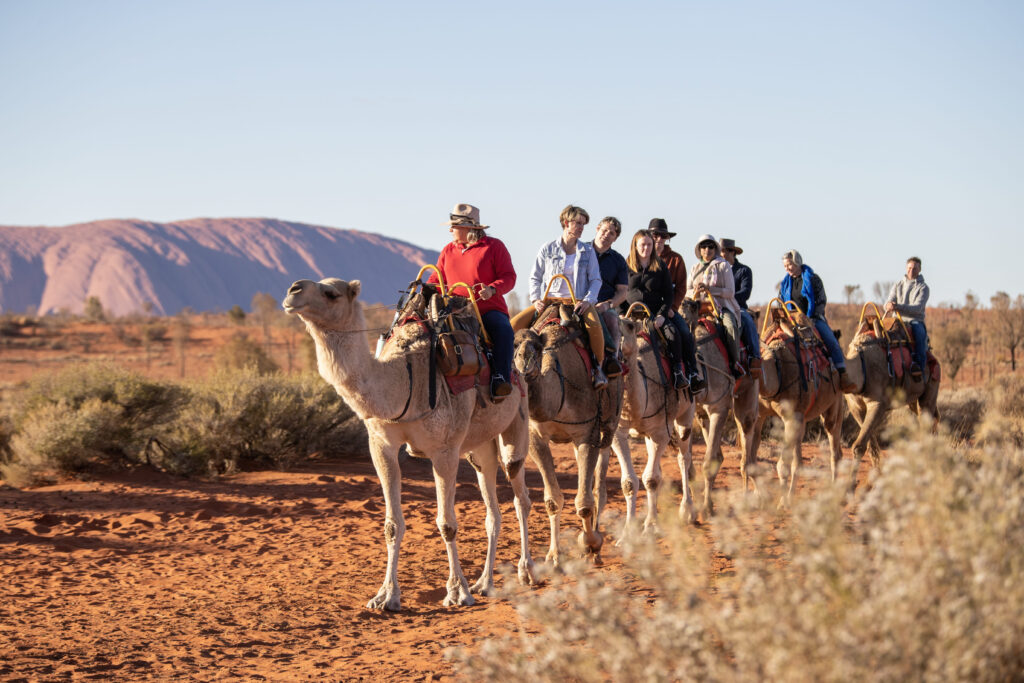
By Jim Ferri
If your only view of Australia has been Crocodile Dundee, you’ll be doing yourself a favor if you put Down Under on your list of travel plans.
Yes, you certainly should see icons such as Sydney, Melbourne, and the Great Barrier Reef —just three of many places. But also put Australia’s famous Outback high on the list. Covering an incredible 81% of the continent, there’s no other place like it on earth. And there’s no better place to experience the iconic Outback than in Australia’s Northern Territory.
About twice the size of Texas, the Territory has over-the-top landscapes, incredible wildlife, and an Aboriginal culture that is the world’s oldest continuous living culture, dating back at least 65,000 years. It’s the ultimate Australian adventure destination that’s easily seen on Northern Territory Australia Tours.
It’s at the very top of the continent and colloquially called the “Top End” by Aussies. Its capital, Darwin, is one of the best places to start your NT tour of this incredible region.
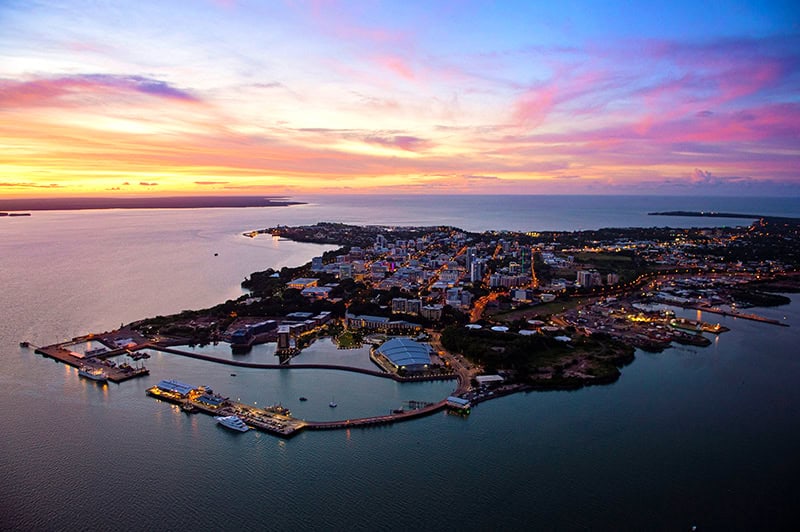
Tropical Darwin
Located on the northern coast of the country, Darwin is a tropical city with the usual two tropical seasons: wet and dry. Wet lasts from November to April, dry from May to October, with dry also being its high season. That’s when the city comes alive with festivals, markets, and, as is true in many tropical climates, outdoor dining. Don’t miss Darwin’s Mindil Beach Sunset Market every Thursday and Sunday 4-9pm- during the dry season.
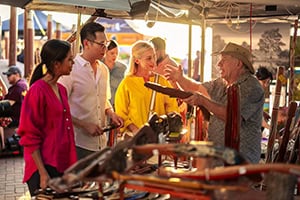
You’ll find no lack of things to do in Darwin. Stroll through the beautiful capital and visit the food stalls to taste local delicacies like barramundi, kangaroo, and crocodile. Also visit the Botanic Gardens, the Darwin Museum and Art Gallery, and the Royal Flying Doctor Base. Relax in the evening aboard a sunset harbor cruise. Relax even more later at Deckchair Cinema, a unique outdoor cinema on the harbor’s edge.
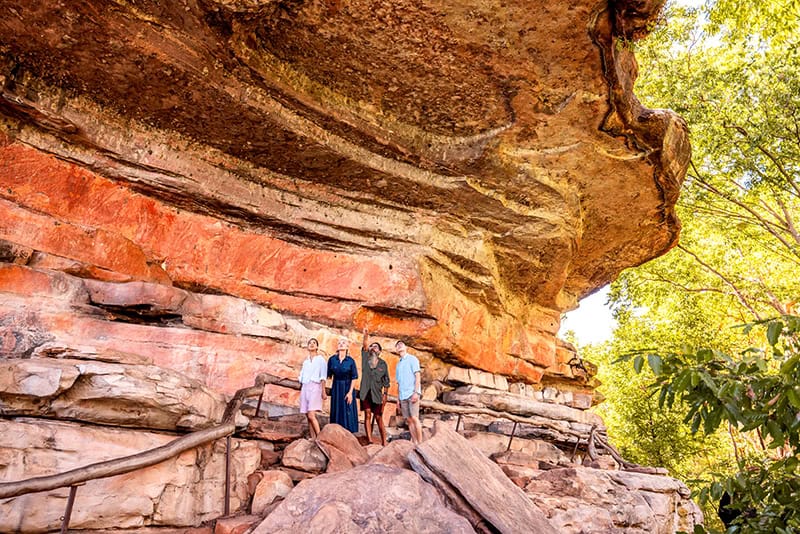
Explore the National Parks
Darwin is also perfectly located for visiting some of Australia’s premier National Parks on the northern end of the Top End. Several are listed as World Heritage sites and are worthwhile day trips.
One of the most famous is the huge Kakadu National Park, a three-hour drive southeast of Darwin. It’s half the size of Switzerland and is renowned for its flora, wildlife, and beautiful scenery.
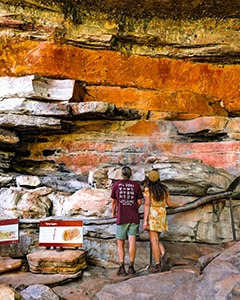
Since this was the homeland of the Bininj/Mungguy people, the Aboriginal people of Kakadu, for more than 65,000 years, it has been the place to learn more about their unique living culture. Kakadu also has more than 5,000 Aboriginal “rock art” sites, making it one of the few World Heritage sites that rank for both cultural values and natural features. Visit the Aboriginal Cultural Centre to learn about the indigenous heritage and the traditional relationship between Aboriginal people and the land.
Since the national park is jointly managed by Kakadu’s Traditional Aboriginal Owners, there are many ways to engage with their cultures. See rock art at Nourlangie and Ubirr and learn more about Kakadu’s heritage by exploring with an Aboriginal guide. You can also join a Yellow Water cruise through Kakadu’s wetlands, home to an abundance of birdlife and saltwater crocodiles.
Only about an hour from Darwin is Litchfield National Park, a huge sandstone plateau with cascading waterfalls that’s also popular among Aussies as a swimming spot. Another popular attraction is its large magnetic termite mounds, well-known for being aligned north to south to regulate internal temperature.

Alice Springs – The Red Centre of the Northern Territory, Australia
Anchoring the southern end of the Northern Territory in Australia is Alice Springs. It’s the quintessential Outback town in the Red Centre, the Territory’s area renowned for the color of its desert floor. Alice, as Aussies call it, has a population of around 33,000 and is the second-largest town in the Northern Territory. Aboriginal culture is an important part of life here, making it a great place to learn more about Indigenous culture. It’s also a place with plenty of things to experience, everything from camel rides to hot-air balloon rides at sunrise.
Alice provides a good sense of what life in the Outback is like. If you’re so interested, don’t miss the Alice Springs School of the Air and the Royal Flying Doctor Service Tourist Facility. If you haven’t yet gotten your fill of “roos”, before you leave, hop over to the Alice Springs Kangaroo Sanctuary.
To view some indigenous artworks, visit the Desert Art Trail just five minutes outside of town. Start at the Araluen Arts Centre, with its galleries of Central Australian Aboriginal art. You’ll also see the works of the Tjanpi Desert Weavers, a group of more than 400 women artists from 26 remote communities. They create beautiful baskets adorned with seeds and feathers, as well as quirky fiber sculptures of dogs and desert animals.
Before you turn in at night, you may want to spend some time looking at the Milky Way and Southern Cross. Since there is no light pollution in Alice, it’s a perfect place for stargazing.

The Phenomenal Uluru, aka Ayer’s Rock
A five-hour drive south of Alice Springs, the phenomenal red rock Uluru is the most iconic image of Australia worldwide.
It’s the world’s largest single rock monolith, 1,142 feet high with a circumference of almost 5.8 miles (9.4 km). Its width is 1½ miles (2.4 km), and its total weight is estimated at 1.4 billion tons. This giant monolith is also over 550 million years old.
Needless to say, when you stand next to it, you feel small. Very small. Very, very small.
Watching the sunrise over this monolith is something you’ll never forget. The same is true for sunset as the rock turns a fiery red. If you’re seeking a unique experience, you can also ride around this natural wonder on a camel.
As a footnote, camels were brought to Northern Territory in Australia in the late 1800s to help in the construction of the railroad across the Outback. Once the project was completed, they were set free and promptly began doing what all wild animals do in the wild. The result is that there are now more camels in Australia than in Egypt. Today you can take camel treks all over the Northern Territory.

Once you’re off your Uluru camel, you may want to visit the Talinguru Nyakunytjaku viewing area for a 360-degree view of the entire Uluru-Kata Tjuta National Park.
Since Uluru is sacred to the local Anangu people, the park is managed with a mix of modern science and traditional knowledge. Join an Uluru Tour to hear Creation stories, see ancient rock art, and learn about the monolith’s continuing significance.
In the evening, don’t miss the delightful Field of Light art installation. The beautiful work of art by internationally acclaimed artist Bruce Munro includes 50,000 solar-powered stems that cover an area the size of seven Aussie football fields (which are larger than American football fields) and appear like huge flower fields at night. The exhibition is aptly named Tili Wiṟu Tjuṯa Nyakunytjaku or “looking at lots of beautiful lights.”

Leave a Reply